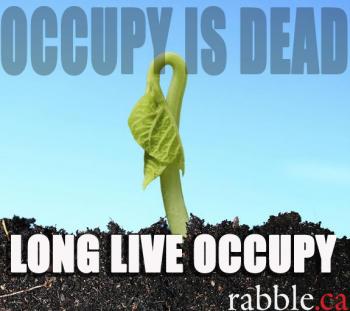On a warm spring day in May of 2012, some 300 people, mostly women, gathered in Washington Square Park, Manhattan, to hold the First Feminist General Assembly.
At the time, a mere two and a half years ago, the Assembly movement was relatively new to North America, so this was truly an historic moment. It was also significant because that year May 17th was the International Day Against Homophobia and Transphobia, and the date marked the 181st anniversary of the first Women’s Anti-Slavery Convention in 1831.
The culmination of eight months of organizing, the Feminist Assembly encouraged participation from all gender identities and related organizations. Melanie Butler, a blogger for Ms. Magazine, wrote, “I arrived to find a diverse crowd of around 300 people. Members of the Occupy Wall Street women’s caucus, Women Occupying Wall Street (WOW), were giving a shout of solidarity to Occupy Maine. The people of Lafayette, Ind.; Bend and Portland, Ore.; Chicago and a handful of other cities were also holding feminist GAs. The Raging Grannies sang “Evolution is too slow, revolution’s the way to go!” and things were off to a raucous start.”
The Occupy movement wasn’t always as diverse as the Feminist Assembly. It took some work.
At first, when the Occupy Movement Assembly met at the end of each day to go over events and actions, male voices dominated the discussions. In response to this, caucuses were formed to address the issue of diversity of voices. The Speak Easy Caucus was formed to encourage those whose voices weren’t being heard to speak out. To follow was the creation of a Women’s Caucus, a Safer Spaces Caucus (to address sexual harassment) and a People of Colour Caucus. The result was a more representative Occupy Assembly and the empowerment of many different voices.
"It’s unfortunate that the mainstream media has paid so little attention to women’s voices at Occupy Wall Street," wrote Daphne Muller in a Ms. blog at the time. [They have] consistently chosen white males to represent the movement. While I don’t begrudge these men for talking to major news outlets – it’s great that they’re willing articulate their concerns to a wide audience – I do fault the media for consistently choosing to interview and profile people from this same demographic."
Canadian writer, journalist, feminist activist Judy Rebick well remembers how gendered Occupy Toronto was in the beginning and how feminism and Occupy affected each other.
"In Toronto the white male voice always dominated. In New York, there was a much greater presence of women and people of colour. In Toronto women were in the leadership organizing but not so much speaking in the assemblies. Also there was a strong minority libertarian current that opposed any special measures for women or people of colour. 'We are all equal here,' sort of thing and the assembly did not have the ability to deal with stubborn minority opinion"
At the time that Occupy spread throughout North America and elsewhere, the Canadian experience was a struggle for feminists and people of colour. "Over time I think [feminism changed the Occupy movement.]," said Rebick. "The women who insisted on a safer space from the beginning continued to work to educate the Occupy activists on feminism. It also made young women activists more feminist. In Toronto there was a struggle that lasted for months to permit women and people of colour caucuses. This was after the occupation itself was over so it was more influential on future movements than on Occupy itself."
The change was evident in a number of movements that were encouraged by Occupy. The Peoples' Social Forum (PSF) in Ottawa in August of this year was evidence that the women and people of colour of the original Occupy movement enacted change. The PSF had a number of caucuses that supported diversity. The Women's Caucus, the Original Peoples Caucus, the Differently Able Caucus, and others had a voice in organizing the Social Forum.
In the end, the most important action we can take is for the future. "Everything is different post-Occupy," said Rebick, "because it showed us the inter-relationships among all issues, the importance of an anti-capitalist stance, the centrality of inequality, the importance of class."
A class war it is, one that embraces both the unique and the inequity of socioeconomics and politics. The two are barely distinguishable from each other now, and many believe it is our responsibility to ensure that a balance can be brought to bear. Occupy gave life to a dream. It is our individual and collective responsibility to ensure that dream is a reality.
Meg Borthwick is a freelance writer and moderator for rabble’s discussion forum, babble.


Comments
Do
Don't